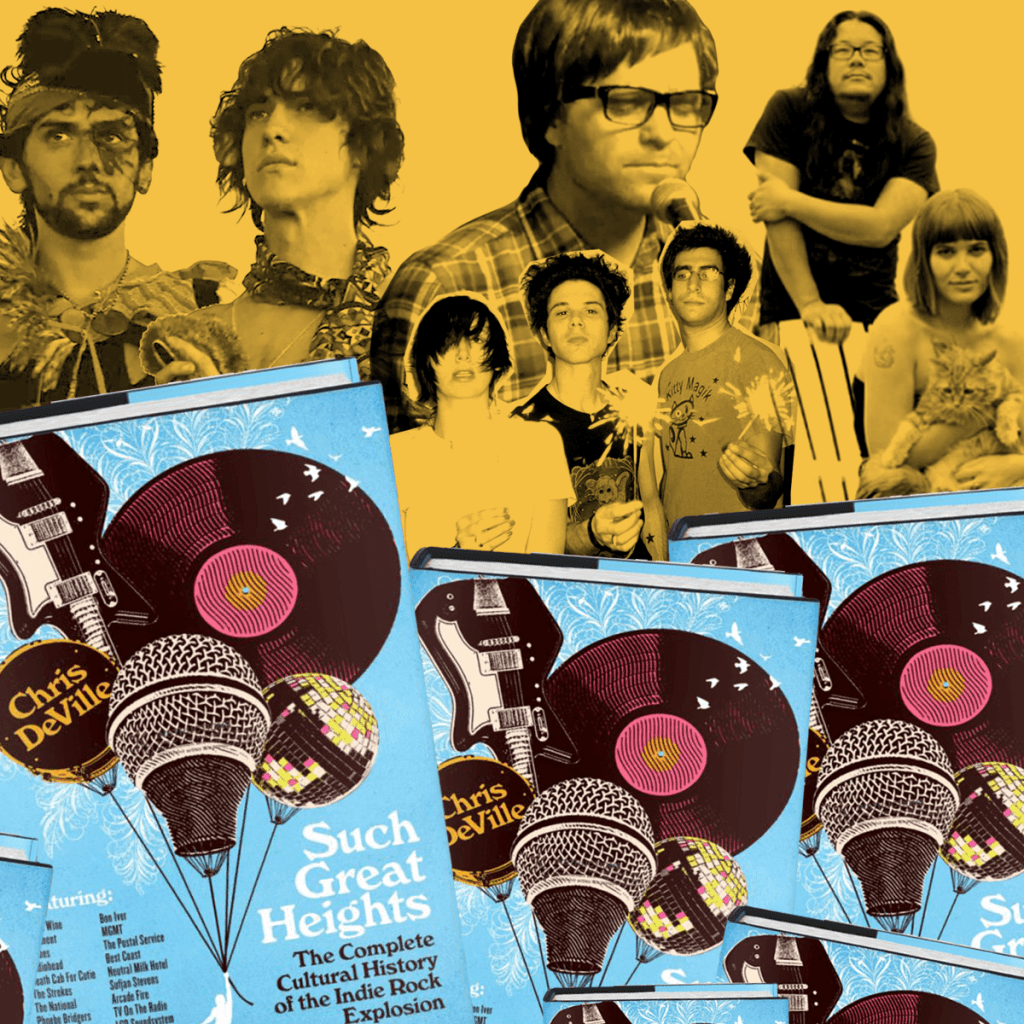Art via Evan Solano
Pranav Trewn finds peace in his vinyl record collection.
“This song will change your life,” Natalie Portman, embodying the paragon of the heavily maligned “indie pixie dream girl” archetype, tells Zach Braff in his 2004 film Garden State, handing him a pair of headphones playing the Shins’ “New Slang.” It’s an immortal scene often memed, partly because in its now-cringeworthy sincerity is also a romanticization of an era when the right song at the right time really felt like it had the power to flip the entire plane of your spiritual existence.
Just as significant but not as popularly depicted is the experience of an album review shifting your sense of self. As a result of influential music blogs from the early 2000s, I once stopped listening to favorite bands fully based on Pitchfork pans. Artists I was initially repelled by became the basis for my personality once they were christened by the right outlet. Back then, many of those twists and turns in my music taste felt entirely natural, if not inevitable, but were really the result of several forces pushing an entire generation’s listening habits towards certain styles. Those listeners became such a sizable bloc, and then lucrative market, that the mainstream that much of this music was made in reaction against began ingesting it in their own image to broaden their cultural reach.
Chris DeVille, the managing editor at Stereogum – one of the last blogs standing from the golden age of “big indie” – had a particular close lens over the two-decade trajectory of indie music going from a real definition (music made by artists outside of major labels) into an ecosystem (of loosely lumped-together bands soaring onto national festival stages and minting a dime in Apple commercials) into an aesthetic (of hipster-chic that become commercialized by clothing companies and pop artists looking to siphon off some critical credibility).
It’s a journey likely familiar to folks who still routinely check the homepages of websites like Stereogum and POW, but it’s riveting to retrace the dynamic set of events that transformed the image of “indie” from Death Cab for Cutie and the Shins to folks like Grimes and Frank Ocean. Somehow we’ve landed in a world where Taylor Swift – the greatest commercial force of her generation – releasing an “indie” album isn’t an oxymoron.
DeVille’s excellent new book, Such Great Heights: The Complete Cultural History of the Indie Rock Explosion, chronicles how we got here. The story seamlessly weaves in his personal reflections as a representative “indie” fan alongside his journalistic insight and reporting on the 21st century disruptions in music distribution that made indie rock both less independent and less rocking. He draws parallels between Hollywood courting hipsters, rockists embracing rap music, and the establishment giving Grammys to Arcade Fire, fashioning something of a unified theory of how both the mainstream crashed through the gatekeepers and the gatekeepers gave in to the mainstream.
Speaking with DeVille was as insightful as reading the book, which is to say it connected several dots for me on the conditionality of fandom, “selling out” as a means of sustainability, and criticism being one of the deepest expressions of care.

